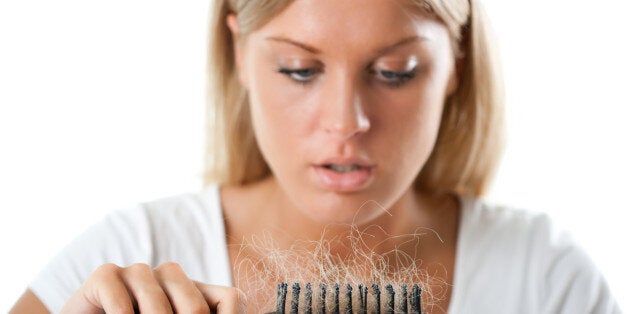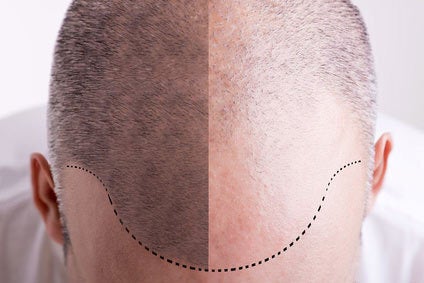
Although it is quite common for people to lose hair as they get older, it can be upsetting when you realise your hair is getting thinner - and even more distressing, if you start to develop balding patches.
Why do people lose hair?
Androgenetic alopecia (also known as male-pattern or female-pattern baldness) is the most common cause of hair loss in men and women. In men, the hair usually starts to thin around the hairline and the crown, which with time can progress to a bald scalp. Most men will take 15 to 25 years to become bald, but in some men the process occurs in a few years.
Women tend to lose hair from the top of the head but not the sides, or they may experience a generalised thinning of the hair. Hair loss in women is more likely to occur in the years after menopause.
In men and women, there is a genetic predisposition to this condition, with those affected inheriting the genes associated with hair loss from either one or both of their parents.
The male sex hormones also play a role, although their role is more clearly understood in male-pattern baldness. In balding men, the main male sex hormone, testosterone, is present at normal levels, but when it is converted to dihydrotestosterone by cells in the scalp, the hair follicles there become over-sensitive to the effects of the dihydrotestosterone. As a result, the hair follicles shrink and each new hair strand coming out of the hair follicle to replace the shed one becomes thinner. Eventually, the hair follicle does not produce any new strands at all.
Other factors that are not related to androgenetic alopecia can cause hair loss. For example, the hormonal changes due to thyroid problems or following the birth of a baby can induce hair loss, as can the stress after surgery and a diet that is very low in iron. Also, some cancer therapies or anabolic steroid usage can lead to hair loss. In these cases, however, the hair loss is generally temporary; once the hormone levels and diet are sorted, or the medication is stopped, the hair resumes its normal growth cycle.
What treatment options are there for hereditary causes of hair loss?
A range of treatment options are available for people with androgenetic alopecia. However, the most permanent, natural-looking solution is provided by hair transplantation.

Scalp Reduction
In scalp reduction, the balding skin is surgically removed and replaced by stretching the adjacent skin that is covered with hair. This procedure works best on the top and back of the hair, but not the front hairline. Nowadays, scalp reduction is generally not used on its own but rather in conjunction with either Follicular Unit Transplantation or Follicular Unit Extraction.
Follicular Unit Transplantation (FUT)
In this procedure, a highly skilled doctor removes a section of scalp - the donor strip - that is covered with hair and dissects it into smaller grafts or follicular units. These follicular units are then inserted into tiny incision sites in the balding area. The procedure, which only requires a local anaesthetic, uses a microscope to help minimise hair damage and is suitable for someone with larger areas of baldness.
Follicular Unit Extraction (FUE)
This is a similar procedure to FUT but more advanced. In this method, rather than removing a strip of scalp, the individual hair follicles are removed from the donor site using a specialised extraction tool, resulting in less damage and bleeding at the donor site, as well as a quicker recovery time. The implanted hair is able to grow and feel as it did in the past.
For more information on FUE Hair transplants, and how it can help you, click here.
Image copyright Fotolia by Adobe
Also on HuffPost UK: